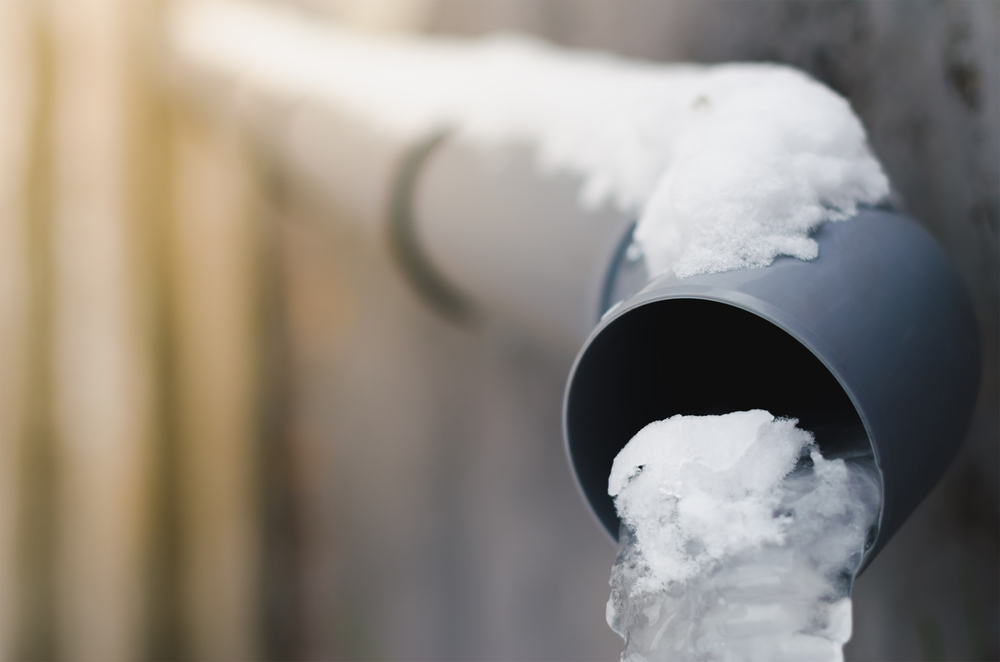We have found the article about 6 Ways to Prevent Frozen Pipes directly below on the web and decided it made sense to quickly share it with you on this page.

Cold weather can wreak havoc on your pipes, particularly by freezing pipes. Here's just how to stop it from taking place and what to do if it does.
Introduction
As temperature levels drop, the threat of frozen pipelines boosts, potentially causing expensive repair services and water damage. Understanding just how to stop icy pipes is important for house owners in cold environments.
Prevention Tips
Insulating prone pipes
Cover pipes in insulation sleeves or use warm tape to shield them from freezing temperatures. Concentrate on pipes in unheated or outside locations of the home.
Heating strategies
Keep indoor rooms appropriately heated up, specifically locations with pipes. Open cupboard doors to enable cozy air to distribute around pipelines under sinks.
Just how to recognize frozen pipes
Search for lowered water flow from taps, uncommon smells or sounds from pipelines, and visible frost on exposed pipes.
Long-Term Solutions
Architectural adjustments
Think about rerouting pipelines far from outside wall surfaces or unheated locations. Include extra insulation to attics, basements, and crawl spaces.
Updating insulation
Purchase top notch insulation for pipes, attics, and walls. Correct insulation aids preserve consistent temperature levels and decreases the danger of icy pipes.
Protecting Exterior Plumbing
Yard hose pipes and exterior faucets
Separate and drain yard tubes before winter months. Set up frost-proof faucets or cover outdoor faucets with protected caps.
Comprehending Icy Pipelines
What triggers pipes to ice up?
Pipes ice up when revealed to temperature levels listed below 32 ° F (0 ° C) for prolonged durations. As water inside the pipelines ices up, it expands, putting pressure on the pipeline wall surfaces and potentially causing them to burst.
Threats and problems
Icy pipelines can cause water disturbances, residential or commercial property damage, and pricey fixings. Ruptured pipes can flood homes and create substantial structural damages.
Indications of Frozen Pipeline
Identifying icy pipes early can stop them from rupturing.
What to Do If Your Pipelines Freeze
Immediate actions to take
If you suspect icy pipelines, keep taps available to relieve stress as the ice thaws. Utilize a hairdryer or towels taken in hot water to thaw pipelines slowly.
Final thought
Preventing frozen pipelines requires positive actions and quick reactions. By recognizing the causes, indicators, and preventive measures, property owners can secure their pipes during winter.
6 Proven Ways to Prevent Frozen Pipes and Protect Your Home
Disconnect and Drain Garden Hoses
Before winter arrives, start by disconnecting your garden hoses and draining any remaining water. Close the shut-off valves that supply outdoor hose bibs and leave the outdoor faucet open to allow any residual water to drain. For extra protection, consider using faucet covers throughout the colder months. It’s also important to drain water from any sprinkler supply lines following the manufacturer’s directions.
Insulate Exposed Pipes
Insulating your pipes is an effective way to prevent freezing. Pipe insulation is readily available at home improvement stores and is relatively inexpensive. Pay close attention to pipes in unheated areas such as the attic, basement, crawl spaces, or garage. Apply foam insulation generously to create a buffer against the cold. You can also wrap your pipes in heat tape or thermostat-controlled heat cables for added warmth.
Seal Air Leaks
Inspect your home for any cracks or openings that could let in cold air. Seal any holes around the piping in interior or exterior walls, as well as the sill plates where your home rests on its foundation. Additionally, make sure to keep your garage door closed unless you’re entering or exiting. Leaving it open creates a significant air leak that can lead to frozen pipes.
Allow Warm Air Circulation
During cold snaps, it’s essential to allow warm air to circulate evenly throughout your home. Leave interior doors ajar to promote better airflow. Open kitchen and bathroom cabinets to help distribute heat consistently around the rooms. If you have small children or pets, be sure to remove any household chemicals or potentially harmful cleaners from open cabinets for safety.
Let Faucets Drip
A small trickle of water can make a big difference in preventing ice formation inside your pipes. When temperatures drop significantly, start a drip of water from all faucets served by exposed pipes. This continuous flow helps prevent the water from freezing. Additionally, running a few faucets slightly can relieve pressure inside the pipes, reducing the chances of a rupture if the water inside does freeze.
https://choateshvac.com/6-proven-ways-to-prevent-frozen-pipes-and-protect-your-home/

We were made aware of that article on How to prepare your home plumbing for winter weather through a friend on a different web page. Do you know about anybody else who is in the market for the subject? Please feel free to promote it. Thank you so much for your time spent reading it.
Maintenance Sign-Up
Comments on “Shielding Pipes from Freezing Issues: Essential Tips”